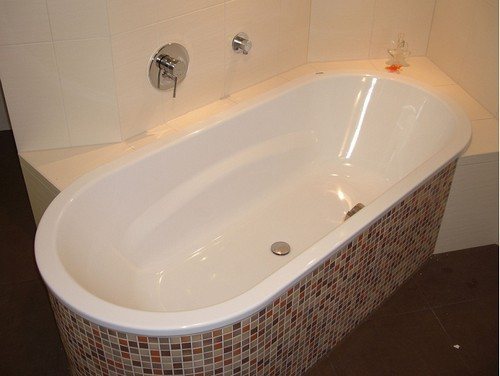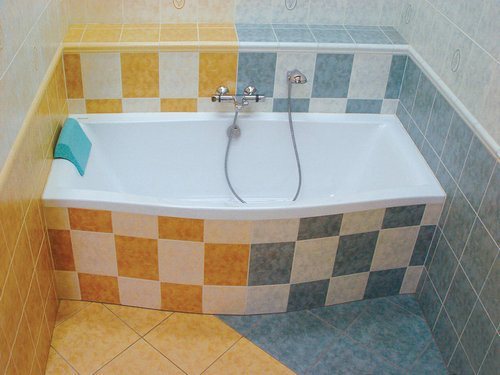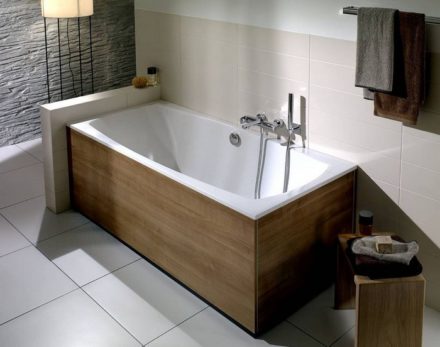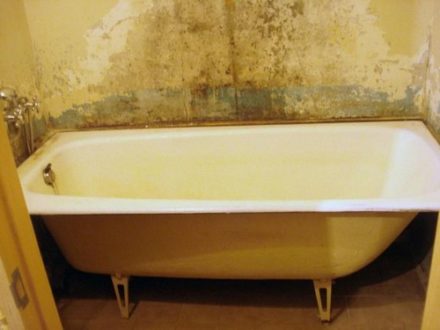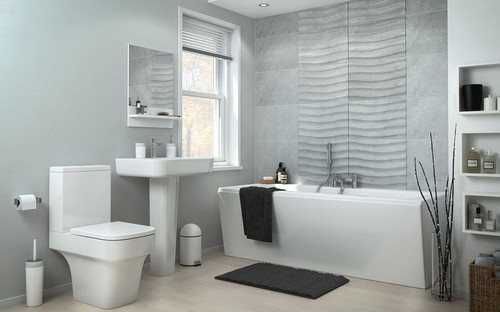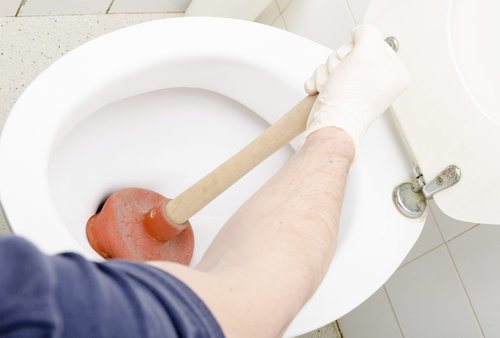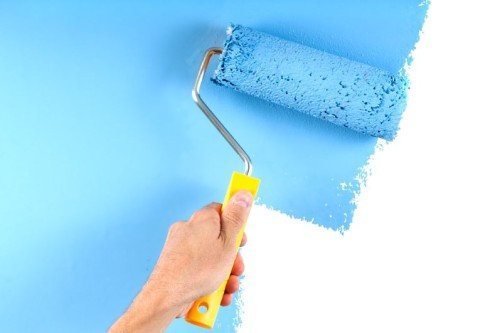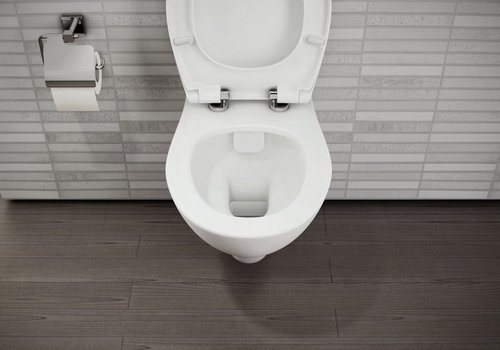Even for those who keep their home clean, traces of soap, lime deposits and other contaminants appear on the surface of the bathtub. How to clean a bathtub from plaque at home? Much depends on the material from which it is made, as well as on the chemical composition of the pollution. Cast iron bathtubs are considered the least demanding; steel and acrylic ones require a more careful approach.
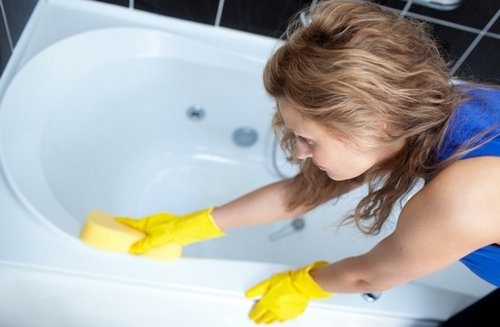
Types of plaque and reasons for its formation
There are several types of pollution:
- yellow streaks,
- rust,
- limescale.
Yellow spots are formed due to the fact that the water contains various impurities, including chlorine and metal salts. To prevent their occurrence, you need to adjust the position of the tap so that the stream of water does not constantly hit the same point.
Rust is formed due to the fact that water contains a lot of iron salts. Old water pipes can also cause leaks.
Hard tap water quickly leads to the formation of limescale. Since tap water contains lime and various minerals (mainly calcium and magnesium), when the liquid evaporates, a lime-mineral layer remains on the surface of the bath. At first these are almost indistinguishable particles, but over time the thickness of the layer increases.
How to clean a steel or enamel bathtub
In order to remove plaque and other contaminants from the surface of a steel or enamel bathtub, use alkaline-based cleaning products. The algorithm of actions is very simple:
- the product is applied to the surface of the product,
- leave for 5-20 minutes, following the manufacturer's instructions,
- Thoroughly wash off the composition with water.
If necessary, this procedure is repeated. When working with such aggressive cleaning agents, be sure to wear rubber gloves. But you cannot rub the surface of the bathtub with steel wool or use abrasive cleaning pastes, as this will cause scratches. If the enamel layer is severely damaged, it will become thinner, and each time the surface of the product will become more and more vulnerable. For the same reason, you cannot use products intended for cleaning toilets to clean an enamel bathtub. Such compositions are produced on the basis of acids that can very quickly destroy enamel.
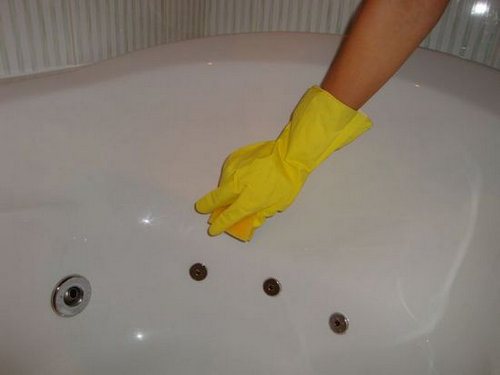
Much depends on the nature of the pollution. Hard water leads to the formation of limescale, which is not so easy to get rid of. The most common option is to use vinegar. For a steel or enamel bath, take slightly heated vinegar or a solution of citric acid and treat the contaminated surface, leaving this composition for some time. The vinegar or acid reacts with the lime and breaks down the plaque. The meshes of shower heads and taps are treated with the same products. If this is not done, they will become clogged and work worse. These parts are immersed in containers with vinegar solution for half an hour, after which they are washed with water and installed in their original place.
Many cleaning products are made with oxalic acid. If you want to get a composition with a lower concentration, then you will have to prepare the solution yourself, at home.Usually, to clean even stubborn plaque, a 5% solution is enough, which is applied to problem areas for two hours. After this, the composition is washed off with a strong stream of water.
What to do if there is rust on the surface of the bathtub?
Plaque does not always contain only calcareous compounds. Sometimes it is supplemented by rusty smudges. In this case, home remedies like vinegar are ineffective. Special compounds are required for cleaning metal from rust. Since, from a chemical point of view, rust is an aqueous oxide of iron, to remove it you need acids that dissolve such oxides.
When treating a bath with such a solution, you need to remember that during the chemical reaction between it and rust, salts harmful to the enamel are formed, which destroy the surface layer. To avoid this, the use of special cleaning products ends with a thorough rinsing of the bath. Such chemicals can be used no more than once a month. In addition, it is more important to eliminate the cause of rust than the contamination itself. It is necessary to check the condition of the pipes and their connecting elements - this will prevent leakage.
Some housewives recommend hydrochloric acid to clean rust stains and plaque. However, you need to be careful with this substance. It is only suitable for enamel baths, as it harms the unprotected metal surface. When preparing a solution of hydrochloric acid, it is recommended to wear gloves. The solution is applied to the contaminated areas, left for an hour, then rinsed thoroughly with running water, sometimes using a mild detergent.
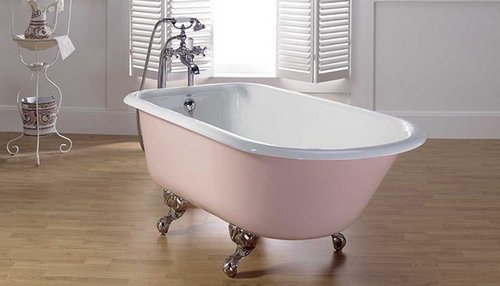
How to clean an acrylic bathtub?
Acrylic is a polymer material that does not corrode. It is also resistant to mechanical stress. In addition, enamel is not applied to such bathtubs, which eliminates peeling of the coating, as is the case with cast iron bathtubs. But acrylic products have a drawback - they are afraid of scratches, which appear on their surface quite easily.
Therefore, when cleaning such a bathtub, you cannot use abrasives. Regular dirt can be easily washed off with water and any liquid detergent, including kitchen or dishwashing soap. Use a foam sponge or a special cloth to avoid scratching the surface. If the plaque has already dried, then first fill the bath with warm water so that the dirt has time to soak off, and then use a regular detergent.
To successfully combat persistent plaque in acrylic bathtubs, you cannot use aggressive chemicals. But in any kitchen there are products that do not react chemically with the polymer, but at the same time clean the surface of the product. This is citric acid and vinegar. They are not used in pure form, but in solution, so as not to damage the bath itself. You need to proceed like this: fill the bathtub 2/3 of its volume with warm water and dilute 0.5 liters of vinegar in this liquid. These ingredients are mixed and left overnight, after which the bath is washed in the usual way. Prepare a solution with citric acid in the same way. Please note: in this case, you need to mix the ingredients longer so that the powder has time to dissolve.
It is more difficult to deal with moisture-resistant stains. It all depends on their chemical composition. If it is sand or dried clay, then you just need to apply liquid detergent to the stains for a while, and then wash as usual.If (for example, during renovation) stains from plaster, lime or even bitumen appear on an acrylic bathtub, you will have to look for a special product.
Any cleaning powders are abrasive. Therefore, soda is not suitable for an acrylic bathtub, although some housewives use it. The fact is that baking soda can also leave scratches. And in most cases, you can get rid of such defects only by filling them with acrylic.
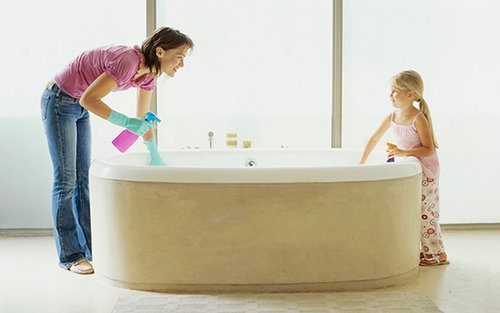
Useful tips
Plaque formation can be avoided. If you regularly wash the bathtub, dry it thoroughly (if necessary, even blot it with paper napkins so that no water remains), do not leave the taps open, monitor the condition of the pipes and follow the manufacturer’s instructions, then there will be no plaque. It is not always possible to achieve this, so you need to follow the recommendations for cleaning such contaminants - then you will not have to carry out such procedures too often. With careful care, it is enough to clean a steel or enamel bathtub once a week, but clean an acrylic bathtub less often - once every two weeks.
Regardless of the material from which the bathtub is made, alcohol-based compounds should not be used to clean it, as they damage the surface, especially with frequent use. Concentrated chemicals should not be left on the surface for too long. This damages the product.
Strong changes in temperature – both water and the environment – should not be allowed. These factors negatively affect the condition of any coating; they are also harmful to the enamel. And one more thing - you should not frequently soak laundry in the bath using washing powder.Modern powders contain active components that can damage both acrylic and enamel surfaces.


